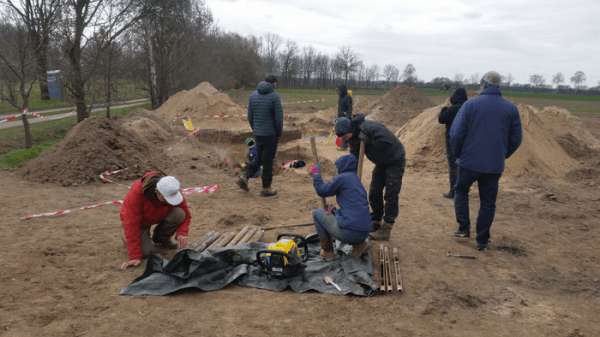Scientists from the Leibniz Institute for Applied Geophysics (LIAG), the Max Planck Institute for Evolutionary Anthropology (MPI-EVA) and other partners have researched the stability and development of landscapes in the Wendland region of Hanover during the past Eemian Interglacial (warm period) around 120,000 years ago. The Eemian is climatically comparable to predictions for the later 21st century. The basic research therefore serves to understand how landscapes respond to climate changes under natural conditions – without additional human influence. As part of their investigations, the researchers also found evidence of the northernmost Neanderthal occupation of the last warm period to date.
The "Lichtenberg" project is an experimental laboratory for landscape research: By means of a drilling campaign and with the support of the State Office for Mining, Energy and Geology (LBEG), the research team started a comprehensive investigation of the area near the village of Lichtenberg about three years ago, because the sediments offer a unique insight into the history of the Eemian.
With the help of borehole geophysics and several seismic measurements as well as the analysis of numerous sediment cores and pollen contents, the researchers managed to reconstruct the development of a small lake as part of a lake landscape that extends over more than 200 square kilometers in the southern Wendland. The results of a study now show the course of development: Both at the beginning and towards the end of the Eemian, there was a strong rise in the water level during the climatic changes due to, among other things, lower evaporation caused by more open vegetation, combined with considerable soil erosion causing relatively unstable land surfaces. In contrast, during the main phase of the warm period, closed deciduous forest cover prevailed, which in turn resulted in a gradual lowering of the lake level. The dense vegetation cover of that time provided optimal protection against soil erosion and resulted in remarkable stability of the land surfaces.
Read more at: Max Planck Institute for Evolutionary Anthropology
Archaeological excavation near Lichtenberg, Germany, in spring 2019. (Photo Credit: David C. Tanner/LIAG)


